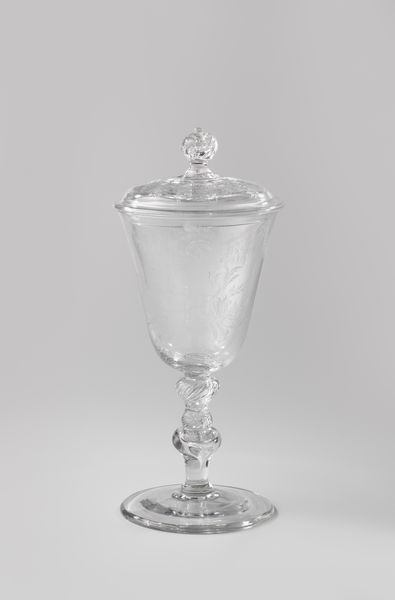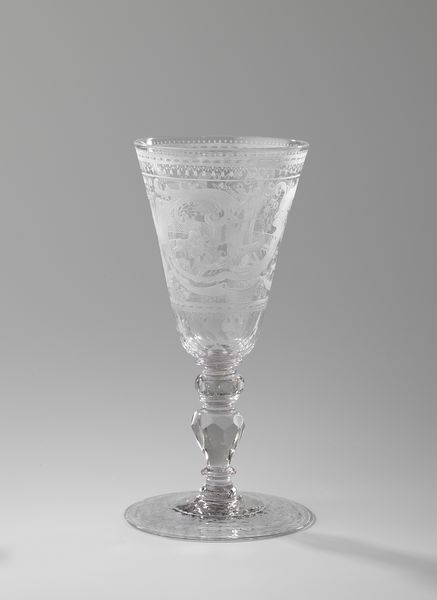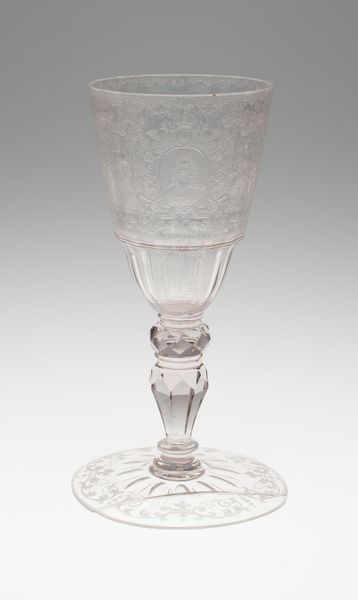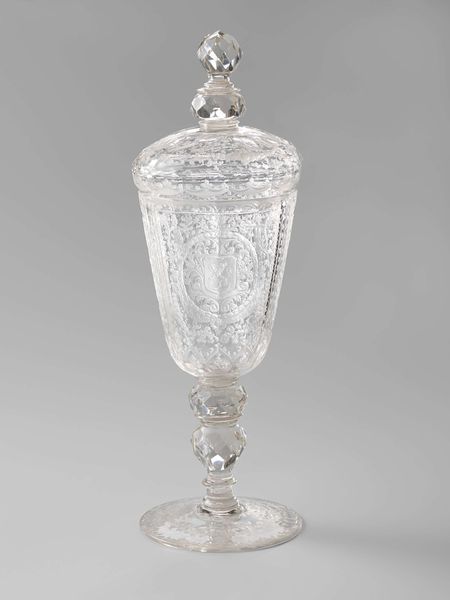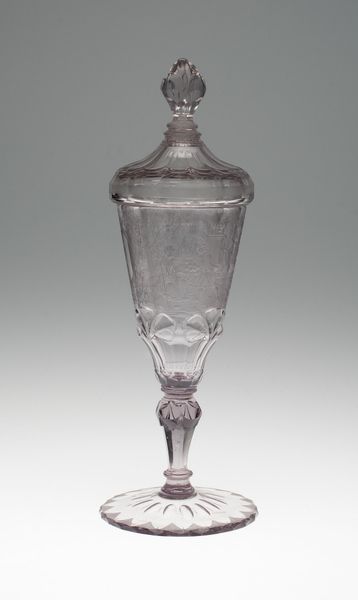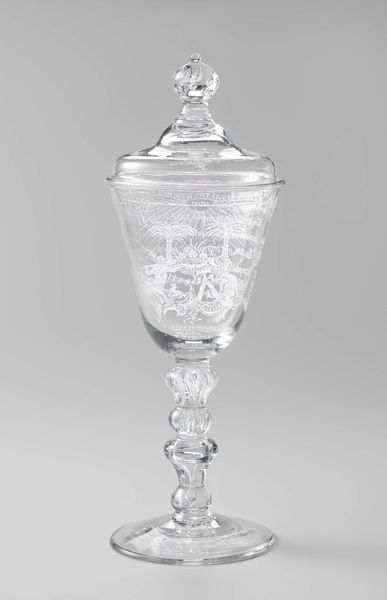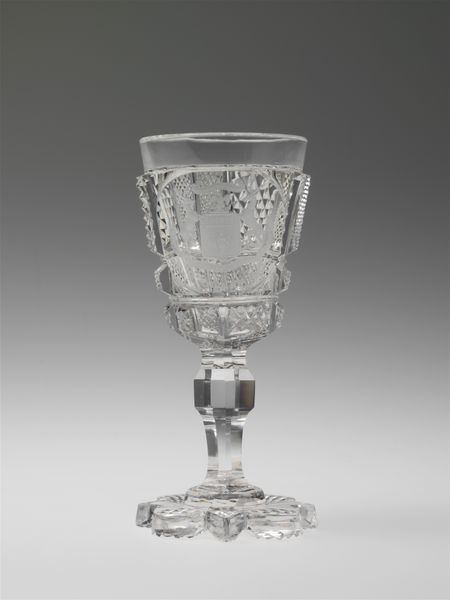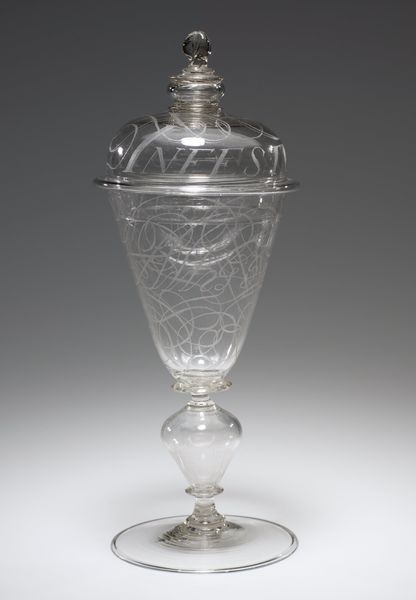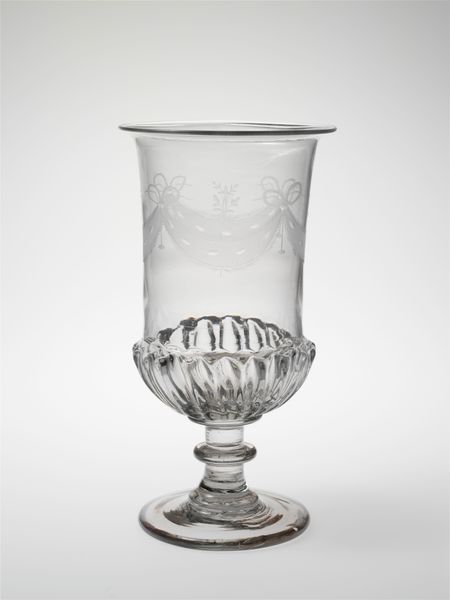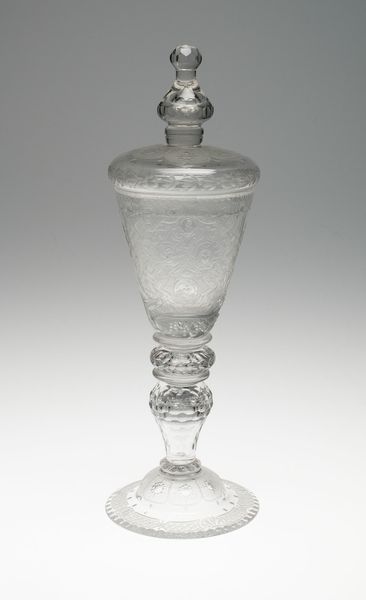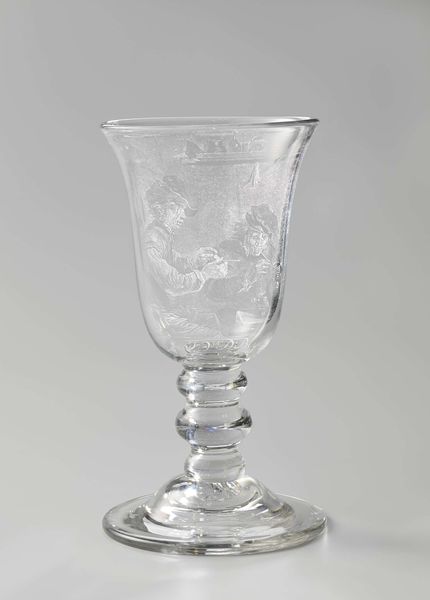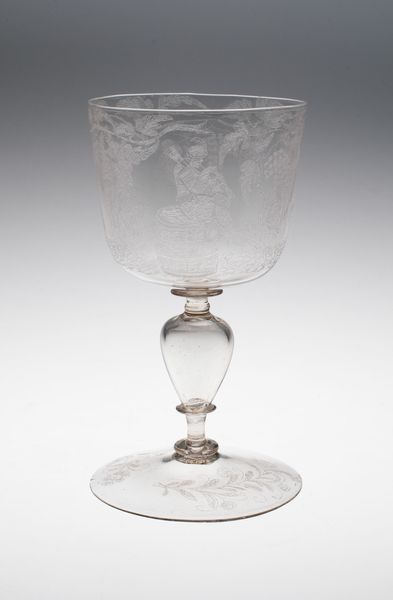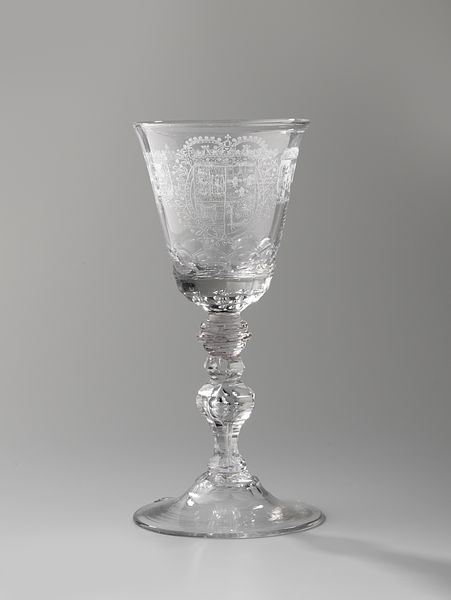
carving, glass
#
carving
#
neoclassicism
#
glass
#
ceramic
#
united-states
#
decorative-art
Dimensions: H. 11 1/4 in. (28.6 cm)
Copyright: Public Domain
Curator: Look at the ethereal glow of this Covered Goblet. Made around 1788 by the New Bremen Glass Manufactory here in the United States, this piece employs glass and carving to achieve an incredible effect. Editor: My first thought is pure elegance. The craftsmanship is so delicate, it seems almost unreal. It definitely has an old world formality to it that reminds me of aristocratic court life, what with the engraved crest. Curator: You are absolutely right. Though crafted in America, the goblet strongly evokes Neoclassical aesthetics that were very much in vogue in Europe at that time. Its very presence here signals the ambitions of early American manufacturers hoping to court wealth and good taste. Editor: It's interesting, isn't it? The way the light catches the carved details—those figures flanking the crest, what look like lions and perhaps unicorns—transforms what could be a simple object into something that seems imbued with deeper significance. Are there specific stories or historical references tied to those heraldic emblems? Curator: Indeed. Such visual choices weren't arbitrary, they played to very specific political symbols. Notice the crowned heraldic symbols, along with the banner indicating Royal. Editor: And that subtle, frosted surface. I can only imagine what would have been held inside, some ceremonial drink for important occasions, something that ties the ritual of display to this piece. Curator: Undoubtedly. Objects such as these affirmed status within colonial society. They signaled a certain level of financial prosperity and access to trade, also echoing established societal hierarchies. What a compelling reminder that every artifact is imbued with so many meanings. Editor: Agreed, what seemed like just a pretty glass container really shows a society being shaped. I leave contemplating how objects speak of class, taste, and political affiliations long after their original owners have faded.
Comments
No comments
Be the first to comment and join the conversation on the ultimate creative platform.
